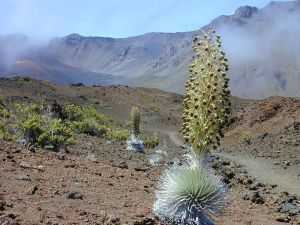The sweet autumn smell of,….tarweed?
“And now the tar weed, sweet vagrant of the valley,
Useless, unloved, but offering its golden discs by millions
To waste places, filled the air with its poignant tang,
Bringing back childhood with a pang of pain–
Old dreams of childhood lived in this lovely valley.”‘Long Valley’ by Margaret S. Cobb 1911
One benefit of not being ABLE to weedeat our big field, is that the tarweed growing naturally there, is allowed to bloom! I love the soft yellow glow coming from this lower area below the garden, and the fragrance is unbelievable!
Definitions of tarweed: Noun: any of various resinous glandular plants of the genus Madia; of western North and South America.
California Native Plant Societies plant it as part of revegetation projects. Articles are written telling where to buy it, plant it and sow the seeds from it. The tiny tarweed seeds were an important source of food for early California Indians and finches and insects share the attraction. Some folks, like us, sometimes have to weed eat it.
“What is that wonderful smell”, guests exclaim! So spicy and fragrant, Common Madia, Madia elegans and Heermann’s tarweed, Holocarpha heermannii are both referred to as tarweed in the Sierra Foothills. To some the smell is unpleasant and all pervading and the locals here would look cross-eyed at anyone who said they ‘liked’ it, much less voluntarily planted it.
At first I laughed when I saw a write-up on it as a useful garden plant in a ‘fine gardening’ magazine, however, now I have much more appreciation for it, although I know its place is ‘in the field’ not in my garden beds. It’s even in the Annie’s Annuals catalog.

An article telling where to buy and plant it. I laughed and laughed when I saw this article in ‘Fine Gardening’ magazine, but now I appreciate tarweed, especially the Elegant madia, so pretty and fragrant in summer.
Both types here are annuals and bloom all summer and by September we’re, most of us here in the mountain area, including it in our fire prevention and weedeating routine of clearing 100 feet around our houses. You have to wear pants made of ripstop nylon to keep the sticky, sappy branches from sticking to your clothing. You learn early on to only wear shoes without laces when walking the property and we have been astounded to see our cat, Crystal, run by with a branch of airy tarweed sticking to her fur.
You can tell it’s fall when you see the fields of golden tarweed glowing up and down Hwy 49 near Oakhurst and all along Rd 200 out of North Fork.
In the early mornings, soon after the sun rises the Madia flowers open, but after noon, you’ll never see it, the flowers close right up in the heat of the day. See the photo below! To many, it’s the fragrance of the mountains in the autumn, bringing back the knowledge that they are home now.
After a recent rain the soapy smell is pleasant and comforting and I fill my lungs with the scent. I’d never admit that to many local folks who have it to maintain, but to guests…I just explain that that is the wonderfully fragrant meadow plants we have here.
Gardeners…? I will share some with you! Have plenty….
“As -gaily I sauntered down this well-beloved road,
How pleasant to smell the fragrant tar-weed.
But those bright days have gone, never more to come again.”John Edward Boyd – 1905
Botanist, Mr. Asa Gray named one variety of tarweed after his friend John Muir, and amazingly, scientists have found that a group of Hawaiian plants, the silversword have evolved from an ancestral California tarweed! DNA evidence proves that Californian tarweeds reached Hawaii by long-distance biological dispersal and evolved into the silversword there.







2 comments